Asian Food Dishes: Basic Overview
Common Ingredients
Common Cooking Methods
Courses
Meals
Key Taste
Eating Etiquette
Meal Presentation
Culinary Festivals
Influence and Fusion
Popular Types of Asian Dishes
-
Dumplings
Asian dumplings are a versatile staple, varying from steamed or fried to filled with meat, vegetables, or seafood.
They normally pair with dipping sauces.
-
Rice Dishes
Rice is a primary staple across Asia. Dishes range from simple steamed rice to complex preparations.
-
Noodle Soups
Asian noodle soups offer comforting warmth with broths ranging from rich and meaty to light and herbal.
The noodles vary in type. Meats and vegetables are two common accompaniments.
-
Dry Noodle Dishes
Dry noodle dishes in Asia are served without broth, often stir-fried or tossed with sauce, vegetables, and protein.
Flavors range from savory to spicy.
-
Grilled and Barbecued Dishes
These Asian dishes use meats, seafood, or vegetables seasoned and cooked over an open flame.
That’s why they have a smoky flavor and are often served with dipping sauces.
-
Soups
Asian soups can be clear, thickened, or full of various ingredients.
They can be hearty meat base to light, brothy soups with delicate flavors.
Asian dishes are from countries in Asia that have gained widespread recognition within and outside the continent.
Given that Asia is the largest and most populous continent, Asian foods encompass various culinary traditions of six major regional cuisines, including Central Asian, East Asian, North Asian, South Asian, Southeast Asian, and West Asian.
Overall, Asian cuisine is shaped by diverse histories, traditions, and regions. Their common ingredients are rice, noodles, meat, seafood, a variety of vegetables, and more.
In addition to exploring well-loved Asian dishes, I delve into the traditional foods of Asia, their worldwide appeal, and the secrets behind their health benefits.
You’ll also discover insights into the distinct features of regional Asian cuisines, the top Asian countries for food, the best food cities across the continent, how these dishes play a role in celebrations and cultural traditions, and the must-have cooking tools and tableware.
Find out why spicy food is a staple in certain Asian countries, which ones are known for their heat, and what makes Asian street food so irresistible.
I’ll also look at which countries shine in the street food scene, and compare Asian dishes with Western and European gastronomy, and how to pair Asian dishes perfectly with beverages.
52 Popular Asian Dishes with Filters
Find your next culinary adventure with a list of the top 52 Asian dishes, arranged by their popularity. You can easily narrow down your choices with filters for ingredients, flavors, cooking methods, dish types, meal times, and their popularity around the globe.
Dive into a world of traditional recipes, nationwide favorites, innovative fusion dishes, beloved street food, and exotic delicacies to satisfy your taste buds.
Dim Sum
- Street Food
- Traditional
Dim sum is a popular food in Asia originating from China, particularly Cantonese cuisine. There are over a thousand types of dim sum dishes just from Guangdong.
Some standout dim sum dishes include steamed shrimp dumplings, pork siu mai, chicken feet, char siu bao (BBQ pork buns), and turnip cake. They are either steamed, deep-fried, or pan-fried.
Although dim sum is usually savored in restaurants for brunch, you can also find it served at other meal times (like breakfast, lunch, and dinner). It’s customary to enjoy small plates of dim sum with tea, a practice known as “yum cha.” Moreover, dim sum translates to “touch the heart.”
Sushi
- National
- Traditional
Sushi is a popular Asian food with its roots in Japan. Sushi consists of vinegared rice, often paired with raw seafood, seaweed (nori), vegetables, and sometimes fruit like avocado.
The most popular seafood choices for sushi include fish like tuna and salmon, or eel, squid, shrimp, and octopus.
The variety of sushi is truly impressive, namely maki (seaweed exterior), uramaki (seaweed inside), temaki (hand-rolled into a cone), and nigirizushi (hand-pressed), which require skilled sushi chefs.
Sushi can be served as an appetizer, main course, or as part of a multi-course meal. The spicy wasabi paste, pickled ginger, and soy sauce are great companions of sushi.
Some varieties are garnished with daikon radish or pickled daikon. You can use chopsticks or simply pick it up by hand to savor it. “
Curry
- National
- Traditional
Curry is an Asian blend of meat or vegetables, ghee or oil, and spices like ginger, garlic, turmeric, mustard, fennel, cumin, tamarind, and black pepper, depending on where it is made. This delight is mostly associated with South Asian cuisine, especially in India.
Wet curries contain ingredients like broth, coconut milk, yogurt, or tomato purée, resulting in a saucy or gravy-like consistency. Dry curries let a dash of liquid evaporate during cooking.
Curry’s regional variations in Asia are countless, from South Asia (e.g., India, Bengal, Bangladesh), East Asia (e.g., China, Japan, Korea), and Southeast Asia (e.g., Malaysia, Indonesia, the Philippines, Myanmar, Thailand, and Vietnam).
Curry is typically enjoyed as a main course accompanied by steamed rice or bread.
Pho
- National
- Street Food
- Traditional
Pho is an Asian noodle soup from Vietnam, birthed between 1900-1907 in Nam Dinh province. The essence of pho comes from its aromatic broth, typically simmered for hours.
Other components of pho are rice noodles, meat (usually beef or chicken), and various kinds of herbs. Plus, pho is Vietnam’s national dish.
Depending on the Vietnamese region, the accompaniments change. The North prefers scallion, onion, cilantro, and fried pastry sticks, while the South enhances the flavors with many fresh herbs and bean sprouts.
Hot Pot
- Exotic
- Traditional
Hot pot (also known as a soup-food or steamboat) is a popular main course that uses a variety of ingredients. Starting with a simmering broth, you can add meats, seafood, vegetables, mushrooms, and dumplings.
There are different styles of hot pots across Asia. China has its “Southern” and “Northern” styles, Japan boasts nabemono variations such as sukiyaki, yosenabe, shabu-shabu, oden, and chankonabe.
Korea offers Jeongol and Budae Jjigae, Cambodia introduces yao hon, Thailand features Thai suki and mu kratha, and Vietnam showcases lẩu with diverse soup bases. Thailand’s hot pot sometimes uses a spicy base.
Ramen
- National
- Street Food
- Traditional
Ramen is a beloved Asian noodle dish from Japan, believed to have been influenced by Chinese cuisine. Ramen is made with water, wheat flour, and salt, but its charm lies in its variety.
Different regions in Japan offer a spin on the classic. Sapporo is known for its miso ramen, Hakodate for salt-flavored ramen, and Kitakata boasts thick noodles in a pork-and-niboshi broth.
Tokyo offers a soy-flavored chicken broth, while Yokohama’s Ie-kei ramen features a soy pork broth. Wakayama combines soy sauce with pork bone, and Hakata is famous for its creamy tonkotsu pork-bone broth.
Ideal toppings are sliced pork, nori, boiled egg, and scallions. It is served in a bowl, requiring a two-handed approach with chopsticks and a spoon.
Chow Mein
- Street Food
- Traditional
Chow mein is a famous Asian stir-fried noodle dish from China. Chow mein combines noodles, soy sauce, veggies, and possibly meat or tofu as a hearty main course.
Common vegetables found in various chow mein dishes include: cabbage, carrots, bean sprouts, onions, bell peppers, snow peas, and bok choy.
Chow mein has gained significant popularity in India and Nepal. In America, it comes in two tempting versions – crispy and steamed.
The crispy version of chow mein is topped with a thick brown sauce, while the steamed version of this stir-fried noodle is mixed with soy sauce before serving.
Pad Thai
- National
- Street Food
- Traditional
Pad Thai is a well-known stir-fried noodle delight in Asia, originating from Thailand. This noodle dish is a tantalizing entree packed with rice noodles, shrimp, peanuts, scrambled eggs, bean sprouts, dried shrimp, red chili pepper, etc.
Pad thai offers a harmonious blend of hot, sour, sweet, and salty tastes. The tangy taste of tamarind makes this Thai noodle dish unique.
Though pad thai has Chinese influences, it was popularized and adopted in Thailand in the mid-20th century. It was named the 5th most scrumptious food in a 2017 CNNGo survey and graced the online Oxford Dictionary in 2022.
Biryani
- National
- Traditional
Biryani is one of Asia’s most popular rice dishes, originating from the Muslim communities of South Asia. Biryani is a symphony of flavors of rice, Indian spices, vegetables, and often meat such as chicken, beef, goat, lamb, shrimp, or fish. There are some recipes without meat.
Biryani is special in its various varieties, such as Hyderabadi, Mughlai, Awadhi, Tamil Nadu, Kerala, Telangana, and Karnataka styles. Biryani is traditionally served with dahi chutney, mirchi ka salan, a biryani side dish made from green chilies, or sometimes with baghaar-e-baingan, a delightful side dish in Hyderabad.
No matter the occasion, biryani is a perfect Asian dinner recipe and continues to be a standout dish across India and some regions of Southeast Asia. FYI, biryani also has Persian influences, as the term “biryani” is from the Persian word “birian,” meaning “fried before cooking.”
Fried Rice
- Street Food
- Traditional
Fried rice is a staple dish in Asia originating from China. It is a simple mixture of cooked rice, meats like chicken or seafood, and vegetables such as onions, peas, and carrots. A quick stir-fry in a wok or frying pan, enhanced by a splash of soy or chili sauce, truly elevates the flavor of fried rice.
Moreover, fried rice variations differ across regions, with significant popularity in China, Japan, Indonesia, Malaysia, Singapore, Thailand, and Vietnam. It is a hearty main course or a side dish. This simple dish is also a great way to use leftover rice.
Spring Rolls
- Street Food
- Traditional
Spring rolls are an Asian dish originating in Southeast Asia. It’s a dim sum style appetizer wrapped in a thin casing filled with ingredients reflecting regional tastes.
Variations exist across Asia: Taiwan’s popiah, Indonesia and Philippines’ Lumpia, and Vietnam’s diverse range like imperial rolls, chả giò, nem cuốn, chả cuốn, Nem rán, ram, and summer rolls or gỏi cuốn.
Cooking can be through pan-frying, deep-frying, or using pre-cooked ingredients for non-fried types. Apart from being a dish, spring rolls are integral to certain Asian festivals.
Dipping sauces accompany these rolls. For example, Vietnamese favor “nuoc cham” or hoisin peanut sauce, while Japanese prefer karashi mustard or soy sauce.
Kimchi
- National
- Traditional
Kimchi is a fermented Asian dish hailing from Korea. It’s a quintessential banchan, a Korean term for side dishes, which is made mainly from fermented vegetables like napa cabbage and Korean radish.
Its seasonings are gochugaru (Korean chili powder), garlic, ginger, spring onions, and jeotgal (salted seafood).
There are various styles of kimchi, including Baechu-kimchi, Baek-kimchi, Dongchimi, Nabak-kimchi, Kkakdugi, Morkovcha, Pa-kimchi, and Yeolmu-kimchi. Beyond being a side dish, kimchi is also a key ingredient in many Korean soups and stews.
Tom Yum
- National
- Traditional
Tom yum, or tom yam, is a famous Asian soup straight from Thailand made with a broth simmered with lemongrass, chili peppers, kaffir lime leaves, lime juice, galangal, and fish sauce.
The secret is the balance of sour, sweet, spicy, and savory tastes. There are many versions, such as tom yam nam sai, tom yam kathi, tom yam kung, tom yam pla, or tom yam gai.
It’s served over rice topped with freshly chopped coriander leaves, making it an ideal lunch or main course.
Samosa
- Street Food
- Traditional
Samosa is a savory pastry that has spread its roots deep across South Asia, West Asia, Central Asia, and Southeast Asia. Made from flour, its shell is filled with either spiced vegetables or meat and deep-fried to a golden hue. It can be an appetizer, side, or snack.
Regardless of whether it’s vegetarian or meat-filled, it’s a classic staple in the vast world of Asian foods. Known by various names, it’s called shingara in Bengal, bajiyaa in the Maldives, Sambusa baraki in Tajik cuisine, singadas in Nepal, and samuza in Burma.
Satay
- National
- Street Food
- Traditional
Satay refers to seasoned, skewered, and grilled meat from Southeast Asia. It’s a staple in Indonesian street food, and it’s even considered the country’s national dish.
Skewered on bamboo sticks or iron bars as seen in the Sate Klatak variation from Yogyakarta, the meat is carefully seasoned before grilling or barbecuing.
The meat choice for satay is abundant, from the traditional chicken, beef, or mutton to the more adventurous choices like turtle, crocodile, horse, lizard, and snake meat. The ideal accompaniment of satay is lontong, a type of rice cake, or a rich peanut-soy sauce.
Satay’s global allure was showcased when it ranked 14th in CNN Go’s 2011 list of the world’s 50 most delicious foods.
Nasi Goreng
- National
- Street Food
- Traditional
Nasi goreng is a flavorful fried rice dish widely popular in Asia, particularly in the Southeast region. Nasi goreng is deeply rooted in the Malay Archipelago, particularly Sumatra and with influences from Chinese. In fact, it is Indonesia’s national dish.
Key ingredients of nasi goreng include eggs, meat like chicken or beef, vegetables, and seasonings such as sweet soy sauce, chili pepper, salt, and fish sauce. After a good fry-up, locals serve nasi goreng with crispy fried shallots, kerupuk, acar pickles, fresh cucumber and tomato slices, and sambal (Indonesian chili sauce).
Nasi goreng is a breakfast favorite available everywhere, from street food stalls to convenience stores in Indonesia, Malaysia, Singapore, and Brunei.
Nasi Lemak
- National
- Traditional
Nasi lemak is another rice dish associated with Southeast Asian cuisine, where it is considered the national dish of Malaysia.
Nasi lemak’s cooking process involves soaking the rice in coconut cream, then steaming it for an infusion of creamy flavor, often accentuated by pandan leaves.
Nasi lemak is served with a spicy sambal, fried anchovies, fresh cucumber slices, roasted peanuts, and an egg, either hard-boiled or fried. Though traditionally a breakfast dish, it’s enjoyed all day at hawker food centers, roadside stalls, and restaurants.
Beyond Malaysia, you’ll find Nasi lemak in Singapore, Brunei, Southern Thailand, and parts of Sumatra in Indonesia.
Hainanese Chicken Rice
- National
- Traditional
Hainanese chicken rice has its roots in Southern China’s Hainan province. Today, it is very popular in Singapore, where this rice dish is considered a national dish.
The cooking methods of Hainanese chicken rice consist of poached chicken paired with rice cooked in chicken stock and fat, creating a symphony of delicate flavors. It comes with a side of chili sauce, cucumber slices, and a drizzle of light soy sauce.
Hainanese-style chicken rice is also prominent in food courts and hawker centers in Malaysia.
Pilaf
- National
- Traditional
Pilaf is a rice dish popular in parts of Asia, including Central Asia, South Asia, and West Asia. Also known as pilau, pilaf is a hearty main course comprising rice cooked in a savory broth or stock, punctuated by the vibrant flavors of various spices.
You’ll also taste pilau with tender pieces of meat, crisp vegetables, and even some sweet, dried fruits, depending on the region. Typically, it is best to enjoy pilaf with condiments and accompaniments to enhance its taste.
Naan
- National
- Traditional
Naan is a popular flatbread across Asia, from Western Asia to South Asia, and extending to Indonesia, Malaysia, and Myanmar. This flatbread, known alternatively as Nan or Noon, is a simple mix of flour, yeast, salt, and water baked to perfection.
Different regions have their variants: Iran has its range of Nâns, India boasts Naan-e-Tunuk and Naan-e-Tanuri, Indonesia presents Roti naan or roti nan, Myanmar introduces Naan bya, and China offers a Jingzhou-style guokui.
This humble bread pairs well with a range of foods, from Indian and Bangladeshi curries to sweet dishes and soups such as dal. In Myanmar, naan bya is a common sight in teahouses, best paired with tea or coffee.
Pancake
- Traditional
Pancake is a versatile, delicious dish in Asian cuisine, with origins spanning East Asia, South Asia, and Southeast Asia.
This flatbread-like dish, made of simple ingredients like flour, water, and oil, morphs into various versions for breakfast, lunch, dinner, or dessert. These pancakes, whether fried or pan-fried, are tailored to local preferences in toppings and fillings.
China offers both savory and sweet pancakes. Japan boasts okonomiyaki, oyaki, dorayaki, and souffle pancakes, while Korea serves buchimgae, jeon, bindae-tteok, and hotteok.
India is known for dosa, appam, neer dosa, and uttapam. Southeast Asia introduces Indonesia’s serabi, Malaysia’s pek nga and lempeng kelapa, Myanmar’s bein mont, the Philippines’ salukara, and Vietnam’s bánh xèo and bánh khọt.
Banh Mi
- Fusion
- National
- Street Food
- Traditional
Banh Mi is an Asian dish that emerged from the heart of South Vietnam in the 1950s. It’s made with a Vietnamese baguette and usually contains chả lụa (pork sausage), cilantro, cucumber, pickled carrots, and daikon, with added pâté, red chili, and mayonnaise.
The sandwich is versatile, with variations including bánh mì thịt nguội (a special combo), banh mi bi (shredded pork), banh mi xiu mai (meatballs), and banh mi thit nuong (barbecue). There’s even a plain version that’s a treat by itself.
Onigiri
- Street Food
- Traditional
Onigiri (or omusubi or nigirimeshi) is an Asian rice ball, rooted deep in Japanese cuisine. Onigiri comprises cooked white rice, shaped into either a triangular or cylindrical form, and often wrapped in nori seaweed.
Onigiri’s fillings are diverse, such as umeboshi (pickled ume), salted salmon, katsuobushi, kombu, tarako, mentaiko, and takanazuke. This Japanese rice ball can be relished cold or at room temperature.
Onigiri also has several delicious variations, such as Yaki-onigiri (grilled rice balls), Age-onigiri (fried rice balls), and pork egg onigiri (which contains rice, seaweed, pork, and eggs).
With a wide-ranging selection, onigiri is a cherished portable food or bento. Furthermore, you can find them at Japanese convenience stores, supermarkets, or specialized shops.
Gimbap
- Street Food
- Traditional
Gimbap or kimbap is a popular cooked rice dish from Korea in East Asia. The main components of gimbap are gim (toasted dried sheets of seaweed) and bap (seasoned cooked rice).
Gimbap is also a blend of ingredients, including stir-fried or pan-fried vegetables, fish, and meat. Once all the ingredients are prepared, they’re neatly layered on the gim, and everything is rolled into a cylindrical shape.
The rice roll is then sliced into bite-sized pieces and ready to be savored with kimchi and a soy sauce-mustard dip. Some kimbap’s varieties are Chungmu-gimbap and Mayak-gimbap.
Bibimbap
- National
- Traditional
Bibimbap is a mixed rice dish from Korea. The main ingredients of bibimbap include fluffy white rice, a selection of namul (sautéed or blanched vegetables), gochujang (chili pepper paste), tender slices of meat (usually beef), and a soft, sunny-side-up egg.
The vegetables used in bibimbap vary by season and what is available. Some common vegetables include spinach, mushrooms, bean sprouts, zucchini, carrots, cucumber and radish.
Before eating, all these elements are harmoniously stirred together in a bowl, creating a tasteful symphony of taste. Bibimbap holds the 40th spot on CNN Travel’s list of the world’s most delicious foods, demonstrating its significant role in Korean cuisine.
There are also some regional variations of bibimbap like Dolsot, Jeonju, Jinju, and Tongyeong-bibimbap.
Congee
- Street Food
- Traditional
Congee is a type of rice porridge that originates from Asia. Congee is a savory dish made by boiling short or long-grain rice, and sometimes other grains like cornmeal, millet, barley, or sorghum, in lots of water until they soften into a hearty mush.
Depending on the region, congee is garnished with goodies like meats, salted duck eggs, lettuce, and seasonings such as soy sauce or white pepper.
As a classic choice for breakfast or late supper in various cultures, you’ll spot congee on tables from China to Taiwan, Japan, Indonesia, Vietnam, and Singapore. This rice porridge is also a go-to staple for patients in healthcare facilities.
Tteokbokki
- Street Food
- Traditional
Tteokbokki is a popular Asian food that traces its origins back to Korea. Tteokbokki is primarily composed of tteok (rice cakes), eomuk (fishcake), and gochujang (chili paste).
There are different varieties, such as galbi-tteok-bokki or haemul-tteok-bokki. You can add noodles, fried chicken, boiled eggs, or scallions to tteokbokki for extra layers of flavor.
Tteokbokki is a popular street food in Korea and is commonly eaten as a snack. But you can find them in restaurants, too! You can also opt for a spicy gochujang-based sauce or a milder, non-spicy ganjang sauce, depending on your liking.
Sashimi
- Exotic
- National
- Traditional
Sashimi is an Asian delicacy hailing from Japan, consisting primarily of raw fish or meat such as tuna, salmon, mackerel, yellowtail, and octopus.
The raw fish or meat is sliced into different thicknesses tailored to the texture of the chosen ingredient. For instance, salmon and tuna can be sliced to around 3/8 inch. There are several cuts, including hira-zukuri, usu-zukuri, kaku-zukuri, and ito-zukuri, each designed for specific types of fish or presentations.
The raw nature of the dish demands freshness, and skilled preparation is essential to prevent any food-related illnesses. Finally, sashimi is served with soy sauce, wasabi, daikon radish, or pickled ginger.
Udon
- Traditional
Udon is a traditional Asian thick noodle, native to Japan. Udon noodles are simply made from wheat flour, water, and a bit of salt. They can take on many forms based on how they’re cooked and what they’re paired with.
Udon is the star in soups, stir-fries, or even “shabu shabu” hot pots. The thickness, shape, and type of soy sauce used vary greatly from region to region in Japan. In eastern Japan, dark (koikuchi) soy sauce or koikuchi is favored, while the west prefers light (usukuchi) soy sauce.
You might top your udon with prawn tempura, kakiage, kamaboko, or even abura-age, and a sprinkling of shichimi spice. Whether served hot in the winter or chilled during the summer, udon noodles remain a comforting food in Japan.
Laksa
- Exotic
- Traditional
Laksa is a spicy noodle dish in Asia, originating from Maritime Southeast Asia, specifically Malaysia, Indonesia, and Singapore. Laksa comprises thick rice noodles bathed in a rich broth made with coconut milk, tamarind, herbs, and spice paste.
Laksa comes in different forms, such as Sarawak Laksa, Nyonya Laksa, Curry Laksa, Laksa Kuah Merah, Laksa Kuah Putih, and Asam laksa. Regardless of its varieties, laksa is best served steaming hot for breakfast, lunch, or dinner.
Wonton
- Street Food
- Traditional
Wonton is an Asian dumpling, a cherished staple in Chinese cuisine. Wonton’s forms resemble a Chinese gold ingot, providing a symbolic richness along with a tasty bite.
The preparation starts with a square wrapper made from flour, egg, water, and salt. Nestled inside the casing is a savory filling including ground pork and shrimp, seasoned with spices, garlic, and finely chopped green onions. Then, the wrapper is carefully sealed before cooking.
You can savor wontons boiled, deep-fried, or pan-fried, sometimes swimming in a warm, aromatic soup. Besides China, wonton has found a place in various East and Southeast Asian cuisines.
Manti
- Traditional
Manti is a dumpling in Asia, originating from West Asia and the Balkans. Manti’s main ingredients are simple but flavorful, containing dough and filling, typically crafted from ground beef or lamb.
The size and shape of manti vary based on geography. Served alongside fresh onions, sour cream, ketchup, or sour and spicy sauces, manti becomes a satisfying, homely meal.
Some manti variations also exist, including fillings made with a mixture of potatoes and pumpkins. Moreover, manti has also gained popularity in Central Asia and South Caucasus.
Jiaozi
- Street Food
- Traditional
Jiaozi is a type of Asian dumpling that originates from Northern China. Jiaozi is a versatile dish, served as an entrée, appetizer, side dish, or main course, and can be enjoyed year-round, including during Chinese New Year.
The dough of jiaozi is usually made from flour, wrapped around ground meat fillings (such as chicken, pork, beef, shrimp, and fish) or vegetables. Jiaozi’s cooking methods are diverse, encompassing boiling (shuǐ jiǎo), steaming (zhēng jiǎo), pan-frying (jiān jiǎo), and deep-frying (zhá jiǎo).
Once cooked, jiaozi is ready to be dipped into a sauce made of black vinegar and sesame oil or nestled into a warm bowl of soup.
Different variations of jiaozi are made using various cooking styles, stuffing choices, and local favorites. Jiaozi also finds fans in other parts of East Asia and Western countries like the USA, UK, and Canada.
Buuz
- National
- Traditional
Buuz is a type of steamed dumpling from Asia, particularly Mongolia, with a history of Chinese roots. Buuz consists of dough encasing a filling of minced lamb or beef, amplified by flavors of onion and garlic, and rounded off with a sprinkle of salt.
Different fillings, like mashed potato, cabbage, or rice, offer a twist on the traditional recipe. As a steamed dish, buuz is traditionally eaten at home during Tsagaan Sar, the Lunar New Year, and is popular in Mongolia and Buryatia.
Buuz is beautifully presented alongside vibrant salads and crispy, golden-fried bread. To elevate the buzz’s flavor, locals usually enjoy the dumpling with a cup of soothing Mongolian tea, known as suutei tsai, and a shot of smooth vodka for that extra warmth.
Pelmeni
- Traditional
Pelmeni is a dumpling in Asia, closely associated with Russia, specifically the Ural or Siberian regions.
Pelmeni’s dough is made with flour, water, and sometimes eggs. The fillings of pelmeni consist of minced meat (pork, lamb, beef, fish, or any meat type), seasoned with salt, pepper, herbs, onions, and an assortment of spices. With varied fillings, each bite is a fresh exploration of flavor.
To cook pelmeni, you only need to boil the dumplings in salted water until they float. Then, the meat-filled pelmeni pairs perfectly with Russian accompaniments such as borscht, mashed potatoes, sour cream, pickled onions, or mayonnaise.
Peking Duck
- National
- Traditional
Peking duck is an Asian roasted meat dish from Beijing, famous for its thin, crispy skin and little meat. The duck is spiced up with honey, soy sauce, a mix of five different spices, and a sweet syrup called maltose. Then, it’s roasted until it’s perfectly brown and glossy in a special kind of oven.
When it’s time to eat Peking duck, you use very thin pancakes, almost like a wrap. You pile on the sliced duck, some fresh spring onions, crunchy cucumber, and a sweet bean sauce. Everything gets tucked into the pancake.
Bulgogi
- National
- Traditional
Bulgogi is a marinated grilled meat in Asia, tracing its roots in North Korea’s Pyongan Province. Bulgogi is a fine example of gui, which refers to Korean-style grilled or roasted dishes.
The main ingredient is thin slices of beef such as sirloin, ribeye, or brisket. These are bathed in a marinade made of soy sauce, pureed pear juice, garlic, ginger, sugar, sesame oil, ground black pepper, scallions, onions, and mushrooms.
Locals can grill bulgogi on a barbecue or a stove-top griddle or stir-fry it in a pan when prepared at home. It is served as a main course in social settings or special occasions, typically accompanied by kimchi, rice, lettuce leaves, and ssamjang (a spicy paste).
You can find Bulgogi variations with chicken, pork, or even spicy versions with gochujang. Bulgogi is widely available, from upscale restaurants to local supermarkets.
Philippine Adobo
- National
- Traditional
Philippine adobo is an Asian dish cooked with a diverse range of ingredients – from beef, chicken, and pork to seafood or vegetables. With succulent meat, Philippine Adobo stands as the unofficial national dish of the Philippines.
There are many forms of Philippine Adobo, with variations including Adobong manók (the most common), Adobong baka (beef), Adobong sawâ (snake), and Kapampangan adobung kamaru (mole cricket).
Philippine adobo is infused with the flavor of garlic, soy sauce, vinegar, cooking oil, bay leaf, and black peppercorn. Native traditionally simmer adobo ingredients in small clay pots called palayok or kulon, and then eat it with white rice.
Kung Pao Chicken
- Traditional
Kung Pao chicken is a stir-fried, spicy chicken dish in Asia originating from China. The star ingredients of Kung Pao chicken are cubed, boneless chicken, crunchy peanuts, and fiery chili peppers, stir-fried to perfection.
There are several Kung Pao chicken varieties, including the Sichuan and Guizhou versions, and the milder Western adaptation known as Kung Po. It is best to enjoy Kung Pao chicken with a side of rice or noodles for a hearty main course.
While it’s notably beloved in China’s Sichuan province, Kung Pao chicken is also common in Westernized Chinese cuisine.
Tandoori Chicken
- National
- Traditional
Tandoori chicken is another chicken-based dish of Asian, commonly eaten in South Asia. Originating from the Indian subcontinent, tandoori chicken is a roasted chicken delicacy marinated with tandoori masala, dahi (yogurt), and a touch of honey.
The marinade imbues the chicken with a tangy, smoky flavor before it’s skewered and cooked at blistering temperatures in a tandoor oven. Of course, tandoori chicken can also be prepared in a standard oven, on a spit, rotisserie, or over hot charcoal.
Tandoori chicken is a versatile dish that can be served as a starter, appetizer, or main course, and it pairs perfectly with naan flatbread. You might even recognize it as the base for cream-based curries like butter chicken.
Char Siu
- Street Food
- Traditional
Char siu is an Asian barbecued pork dish, born in Guangdong, China. Char siu is a type of siu mei, Cantonese-style roasted meat. Char siu is crafted from pork marinated in a mixture of sherry or rice wine, honey, five-spice powder, red fermented tofu, hoisin sauce, and dark soy sauce.
The cooking method of char siu is also special called fork roasted. Skewering long strips of seasoned, boneless pork with long forks, they’re placed in a covered oven or over a fire.
Although you can savor char siu on its own, it’s delicious when served with a starch like rice, noodles, or tucked inside a bun. Plus, it’s a popular choice in Greater China, Japan, Singapore, and across Sinophone areas in Southeast Asia and more.
Samgyeopsal
- National
- Traditional
Samgyeopsal is a grilled pork belly in Asia, notably in Korean cuisine. The delight boasts a savory taste, being one of Korea’s gui (or grilled dishes). Tender slices of pork belly are perfectly grilled and often served with sides.
Fresh ssam vegetables, like lettuce, kkaennip, tangy kimchi, sliced garlic, onions, seasoned shredded scallions, and ssammu, are great companions. To enhance the overall flavor, enjoy it with dipping sauces, including ssamjang and gireum-jang.
In addition, the variety ogyeopsal includes the skin part of the pork belly, offering a delightful texture contrast.
Sweet and Sour Pork
- Traditional
Sweet and sour pork is another delicious pork-based delicacy in Asia, particularly in Cantonese cuisine. It is deeply rooted in East and Southeast Asian cooking traditions.
Pork, either loin or belly, is the core ingredient, adorned by a tangy sauce comprising Worcestershire sauce, vinegar, sugar, ketchup, and soy sauce. Preparing this dish involves coating the pork in batter and deep-frying it until crispy. As a main course, sweet and sour pork typically pairs with a side of rice and vegetables.
Not only is it a staple in China and Hong Kong, but also its reputation extends to Westernized Cantonese eateries worldwide.
Lechon
- National
- Traditional
Lechon refers to a roasted pig in Asian cuisine, particularly as a Filipino national dish. This meat dish primarily uses suckling pigs and is cooked to perfection by roasting.
Lechon comes in various forms across the region. Visayan lechon and Luzon lechon offer different flavor profiles from the Philippines, while in Indonesia, non-Muslim ethnic groups like the Balinese, Batak, and Minahasa have their own takes on this roast pig.
Each bite is often paired with a dipping sauce like sarsa ng litson (lechon sauce) or toyomansi (soy sauce with calamansi) to maximize your dining experience. In addition, you can transform the leftovers, such as the head and feet, into the savory lechon paksiw.
Tempura
- National
- Traditional
Tempura is a deep-fried Asian dish hailing from Japan. Portuguese traders in the 16th century introduced this dish to the Japanese in Nagasaki, and it has become a culinary favorite ever since.
Creating tempura involves battering seafood, meat, or vegetables in a mix of iced water, eggs, and soft wheat flour, then deep frying until it achieves a light, crispy texture.
Varieties of Tempura include seafood and yasai, or vegetables, and it’s served as a main or side dish, either with a dipping sauce, salted, or assembled into other dishes.
Takoyaki
- Street Food
- Traditional
Takoyaki is a beloved Asian snack from Japan that’s also popular in Taiwan. It’s made with a batter containing octopus, green onion, tempura scraps (tenkasu), pickled ginger, and green laver (aonori).
They’re cooked in a specially molded pan, with ‘yaki’ meaning ‘to grill’ in Japanese. Typically, takoyaki is topped with sauce, mayonnaise, green laver, and dried bonito shavings. Variations include cheese and bacon. It can be enjoyed as a snack or a side with rice.
Falafel
- Street Food
- Traditional
Falafel is a popular Asian dish originating from West Asia and Egypt, made by deep frying balls of mashed broad beans or chickpeas.
You can find it cozied up in a warm pita, samoon, or taboon flatbread, sprinkled with pickled vegetables, fresh salads, and a splash of hot sauce. For an extra savory touch, a tahini-based sauce is drizzled on top.
Falafel can be enjoyed as a snack or as part of a meze tray. It’s also featured in iftar meals during Ramadan and is consumed by Arab Christians during Lent.
Green Papaya Salad
- Exotic
- Traditional
Green papaya salad is an Asian dish, notably a celebrated national dish of Laos. It goes by various names, such as tam mak hung in Lao, som tam in Thai, and others across Southeast Asia.
Distinctive ingredients include green papaya, yardlong beans, fermented fish, and brined crab, all mixed and pounded in a mortar.
Regional variations might feature unripe fruits or vegetables like cucumbers, carrots, mangoes, and apples. There’s even a non-spicy version in Laos, Vietnam, and Thailand. Paired with glutinous rice and kai yang, a type of grilled chicken, it’s a favorite main course or side dish. You can find this popular Asian food in Xishuangbanna, China, and across Burmese, Cambodian, Lao, Thai, and Vietnamese cuisines.
Stinky Tofu
- Exotic
- Street Food
- Traditional
Stinky tofu is an Asian dish, with roots embedded deep in Chinese cuisine. This Chinese creation is a fermented tofu known for its pungent odor but cherished for its unique flavor, often likened to blue cheese or rotten meat.
The stronger the aroma, the more refined its flavor is perceived. Deep-fried, steamed, or stewed, it can be served cold or warm, often paired with chili sauce, soy sauce, or hoisin sauce.
Found in night markets, roadside stands, and lunch bars, variations include Taiwan’s diverse preparations, Zhejiang’s golden fry, and Hunan’s distinct black style. This dish is celebrated across Taiwan, Hong Kong, and China.
Mapo Tofu
- Traditional
Mapo tofu is an iconic Asian dish originating from Sichuan, China. At its core, it’s braised tofu cooked to perfection with minced meat, douban – a spicy fermented broad bean and chili paste, and douchi – delectable fermented black beans.
It’s usually served as a main course, typically with rice. Across Asia, its variations across Asia include additions like water chestnuts, onions, and wood ear fungus. This beloved dish has gained popularity beyond China, notably in Japan and Korea.
Miso Soup
- National
- Traditional
Miso soup is an iconic Asian dish that originated from Japan. It is a comforting blend of dashi stock and miso paste. This soup is often served with rice, making it a staple side dish in everyday Japanese meals.
A popular variation is tonjiru, known as “pork soup” due to its pork content. Highlighting its popularity, the market for freeze-dried miso soup in Japan reached 14 billion yen in 2021, showcasing its cherished status in Asian cuisine.
Mango Sticky Rice
- Street Food
- Traditional
Mango sticky rice is a traditional Thai dessert featuring glutinous rice, ripe mangoes, and coconut milk sauce, offering a mix of creamy, sweet, and tangy flavors. Popular in summer, it’s a staple at street food stalls, restaurants, and homes, enjoyed for its refreshing taste.
This dish is also a part of the Thai New Year’s Songkran celebration and has gained international popularity due to its delicious flavor and widespread mango appreciation.
List of Asian Dishes by Country
How Regional Cuisine Makes Asian Foods Famous?
Asian cuisine is vast and varied, with each region offering its unique flavors, ingredients, and cooking techniques. Here’s a breakdown of how regional cuisine makes Asian foods famous:
In the next part, let’s see which countries in Asia are mostly known for their food.
Which Asian Countries Have the Best Food?
Below are 6 Asian countries that are renowned for their rich culinary traditions and diverse flavors, making them popular among food enthusiasts worldwide.
It’s important to remember that this ranking is not definitive and can vary greatly depending on individual experiences and the cultural diversity of different regions. Moving on, let’s discover which cities are best known for food in Asia.
What Are the Most Famous Food Cities in Asia?
Asia offers a diverse palette of culinary experiences across various cities, each unique in its flavors and traditions. Here are 12 of the most popular food cities in Asia:
These food cities boast a multitude of dishes that are essential in festivals, serving as a testament to the pivotal role that cuisine plays in the celebration of cultural and traditional festivities across Asia.
How Do Asian Dishes Contribute to Festivals And Traditions?
In Asian festivals and traditions, dishes play a multifaceted role, deeply intertwined with cultural practices, regional diversity, and historical influences.
In many Asian cultures, specific dishes are prepared during festivals as they are believed to bring good luck, prosperity, and health. For example, during the Chinese New Year, dishes like dumplings (symbolizing wealth) and fish (representing abundance) are essential.
The preparation and sharing of meals during festivals foster a sense of community and belonging, strengthening family bonds and social ties.
For example: In Korea, during Chuseok (Korean Thanksgiving), families gather to prepare and share a feast that includes dishes like “songpyeon” (rice cakes) and “jeon” (Korean pancakes), paying respect to their ancestors and celebrating the harvest together.
Many dishes served during Asian festivals are loaded with symbolism. Ingredients, colors, and the way dishes are prepared and presented often have specific meanings, such as longevity, happiness, and unity.
During Chinese New Year, numerous dishes carry significant meanings. Dumplings, for example, are shaped like ancient Chinese silver ingots, symbolizing wealth and prosperity for the new year.
Festivals often coincide with agricultural cycles, and the dishes prepared reflect seasonal availability. This connection to the natural world underscores the importance of harmony and gratitude in Asian cultures.
For instance: Mooncakes are a staple food that symbolizes the Mid-Autumn Festival in China and Vietnam.
This rich tapestry of culinary traditions also highlights the indispensable role of essential Asian cooking utensils and tableware in preparing, serving, and enjoying these meaningful dishes.
What Are Essential Asian Cooking Utensils and Tableware?
Here are 6 key items for both food preparation and serving in Asia:
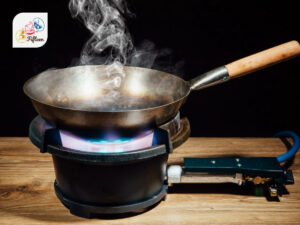
Wok
A versatile, round-bottomed pan used for various cooking methods such as stir-frying, steaming, and deep-frying.

Steamer
Often made of bamboo, used for steaming dumplings, vegetables, and other dishes.

Cleaver
A multi-purpose knife for chopping meat and vegetables, and for tasks like crushing garlic.

Chopsticks
The primary eating utensil for most Asian dishes, used for picking up food.

Spoons
Used alongside chopsticks for consuming soups and broths.
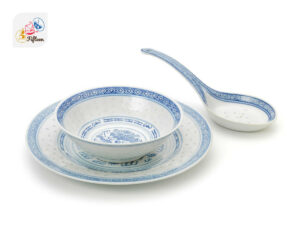
Bowls and Plates
Typically made from ceramic or porcelain, these are used for serving food and often feature intricate designs reflecting Asian aesthetics.
These items are not only crucial in the kitchen but also enhance the experience of enjoying Asian street food, where simplicity meets tradition.
What Makes Asian Street Foods So Popular?
Asian street foods have become popular for several reasons, as below.
This variety and cultural richness underline why certain Asian nations stand out as renowned destinations for street food enthusiasts seeking authentic and diverse culinary experiences.
Which Asian Countries Are Most Famous for Street Food?
Here’s a list of 10 Asian countries known for their street food, arranged in a general order of popularity based on their global recognition and the variety of street foods they offer:
- Thailand: Famous for its bustling street food scenes, especially in Bangkok, offering dishes like Pad Thai, Som Tam, and various skewered meats.
- Vietnam: Known for its Pho, Banh Mi, and various street food markets across cities like Hanoi and Ho Chi Minh City.
- India: Offers a vast array of street foods, from Chaat in the north to Dosa in the south, reflecting the country’s diverse culinary landscape.
- China: Offers a wide range of street foods, from dim sum in Hong Kong to spicy Sichuan skewers, reflecting its regional culinary diversity.
- Japan: Known for its street food delicacies like Takoyaki, Yakitori, and street food markets in cities like Osaka.
- South Korea: Famous for its street food, including Tteokbokki, Korean fried chicken, and night markets in Seoul.
- Malaysia: Offers a fusion of Malay, Chinese, and Indian street foods, with dishes like Laksa, Satay, and Nasi Lemak.
- Indonesia: Known for its diverse street food options, including Nasi Goreng, Satay, and Martabak, reflecting its rich culinary heritage.
- Philippines: Offers a unique range of street foods, from Balut to Adobo, reflecting its blend of indigenous and Spanish influences.
- Taiwan: Famous for its night markets and street foods like Bubble Tea, Gua Bao, and Stinky Tofu.
These rankings are not definitive and can vary based on individual experiences and changing food trends.
This diversity in street food offerings across Asia also showcases the widespread consumption of spicy food, which is a hallmark of many Asian cuisines, adding to their global appeal and uniqueness.
Why Do Asian Countries Eat Spicy Food?
The consumption of spicy food in Asian countries can be attributed to the following factors:
In the next section, you can uncover which nations in Asia consumed the spiciest food.
Which Asian Countries Have the Spiciest Food?
In Asia, several countries are renowned for their spicy cuisine, each with its unique flavors and ingredients that contribute to the heat level of their dishes. Here’s a brief overview:
This exploration of spicy foods in Asia versus the typically mild flavors found in Western cuisines underscores a fascinating comparison, revealing cultural preferences and the diverse approaches to seasoning and heat in culinary practices.
Asian Dishes Vs. Western Dishes
Asian and Western dishes offer a rich tapestry of flavors, ingredients, and cooking techniques that reflect their diverse cultural backgrounds, geographical locations, and historical influences.
Asian Dishes
Western Dishes
Asian Dishes Vs. European Dishes
Here’s a comparison of Asian and European dishes based on ingredients, flavors, cooking methods, staples, meal structure, and dietary focus:
Asian Dishes
European Dishes
Ultimately, both Asian and European culinary creations offer a rich tapestry of flavors, techniques, and traditions, reflecting the diverse cultures and histories from which they originate.
Moving on, it’s time to explore what beverages pair well with Asian flavors, offering a complete dining experience.
What Beverages Pair Well with Asian Dishes?
Asian cuisines offer a wide array of flavors, textures, and ingredients, and finding the right drinks to pair with these foods can enhance the overall dining experience. here are some drinks that pair well with Asian foods:
When pairing classic Asian beverages with dishes, consider the balance of flavors and how the beverage can complement or contrast with the food to enhance the overall dining experience.
Finally, let’s dive into these dishes and share your thoughts. Don’t forget to kike, share, and comment to connect with fellow food enthusiasts!



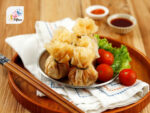
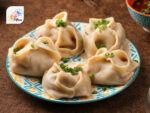
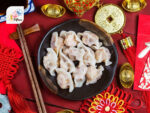
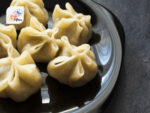
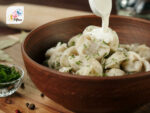
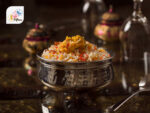
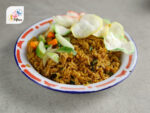
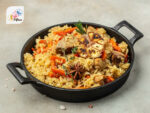
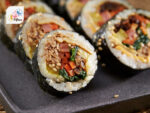
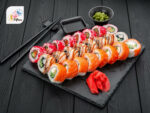
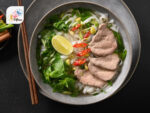
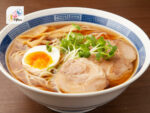
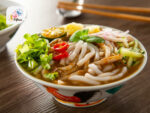

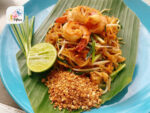
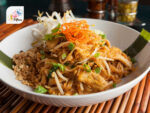
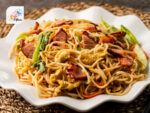
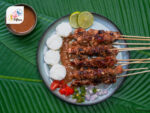
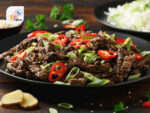

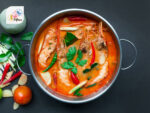
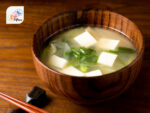
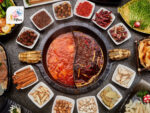
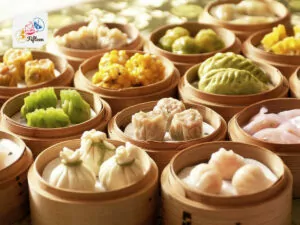
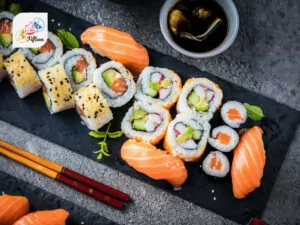
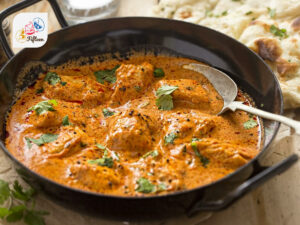
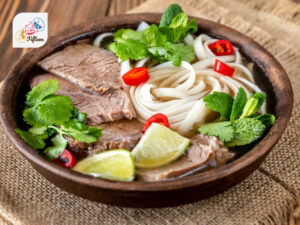
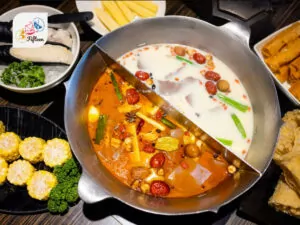
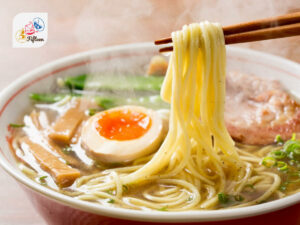
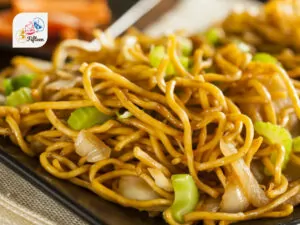
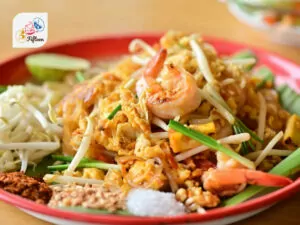
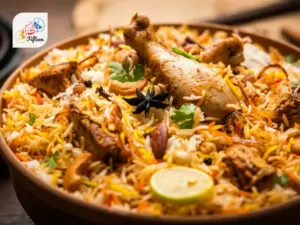
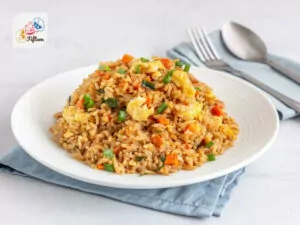

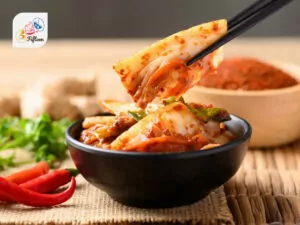
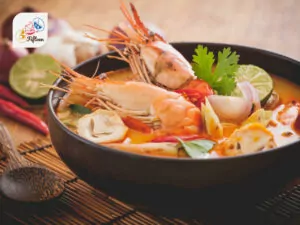
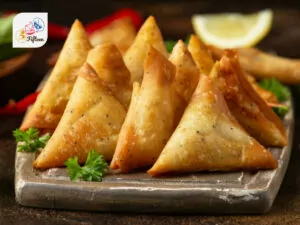
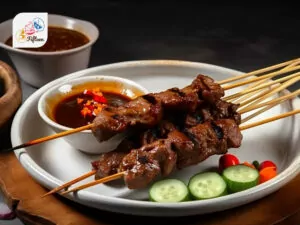
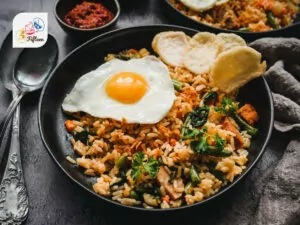
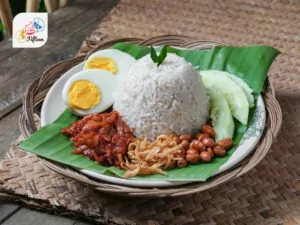
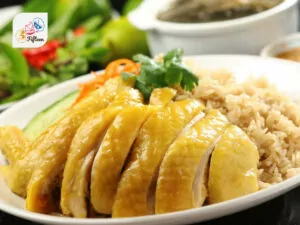
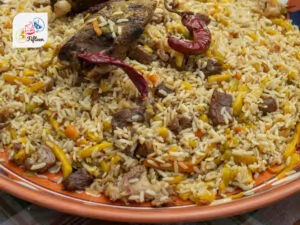
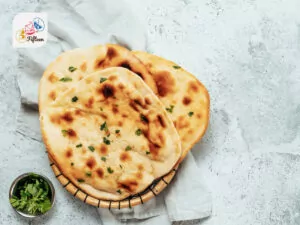
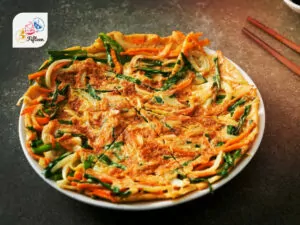
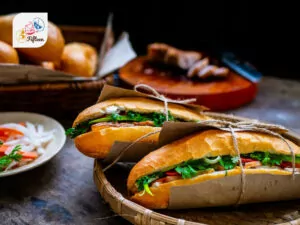
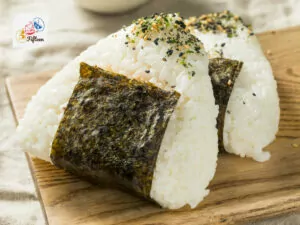
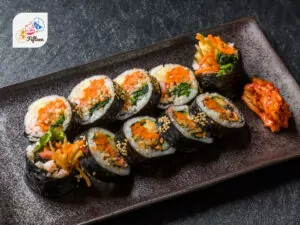
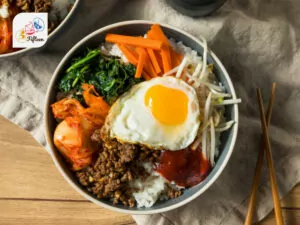
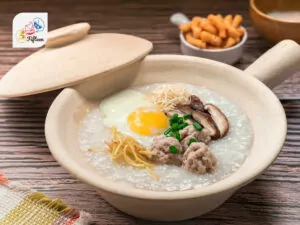
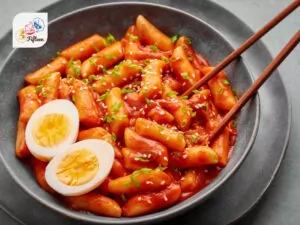
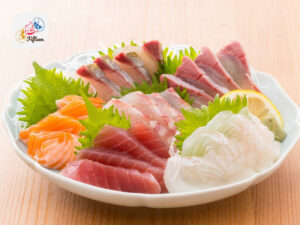
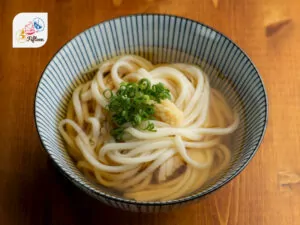
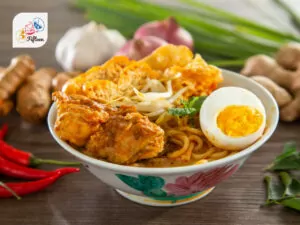
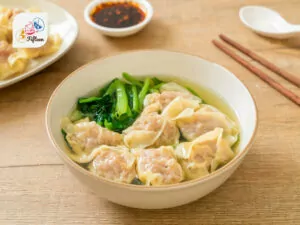
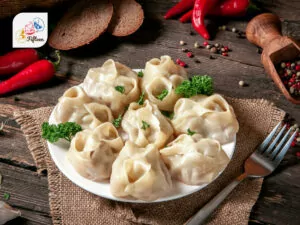
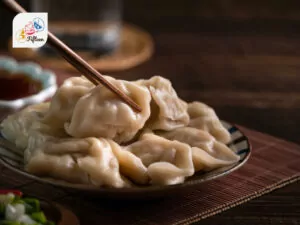
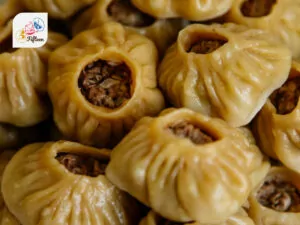
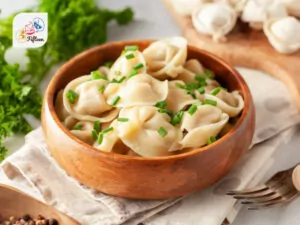
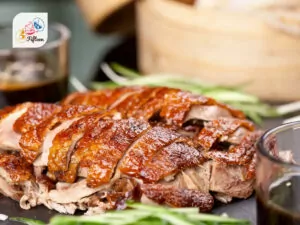
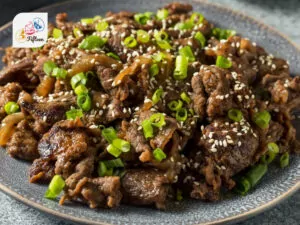
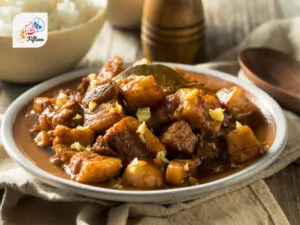
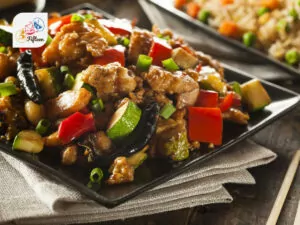
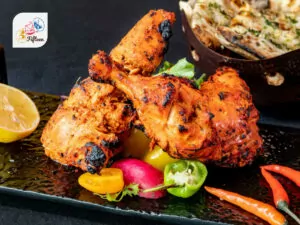
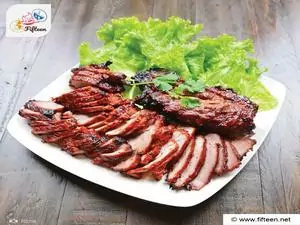
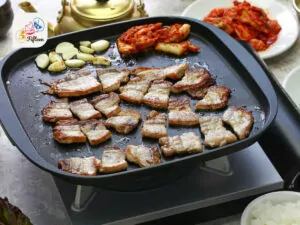
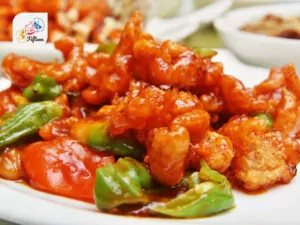
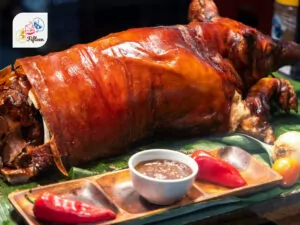
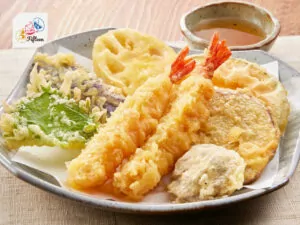
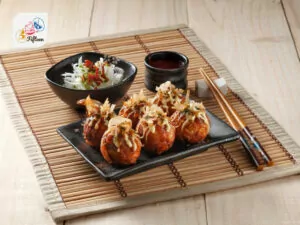
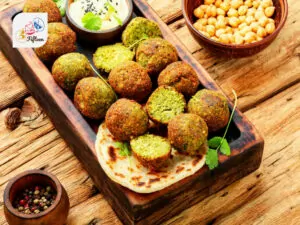
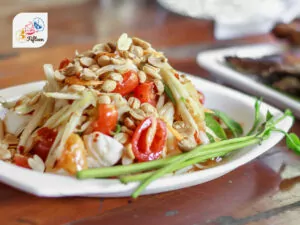

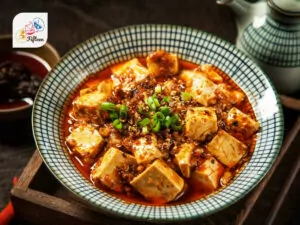
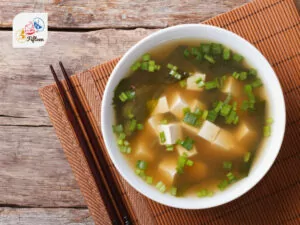
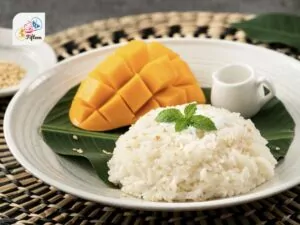
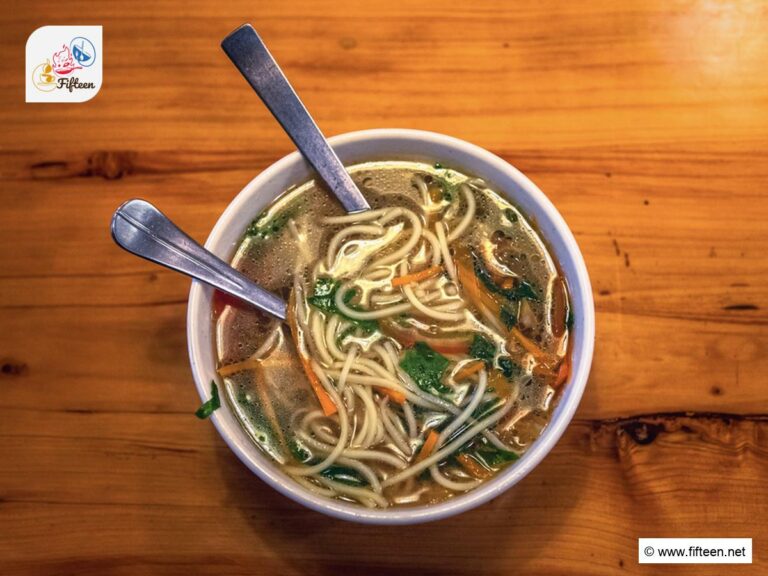
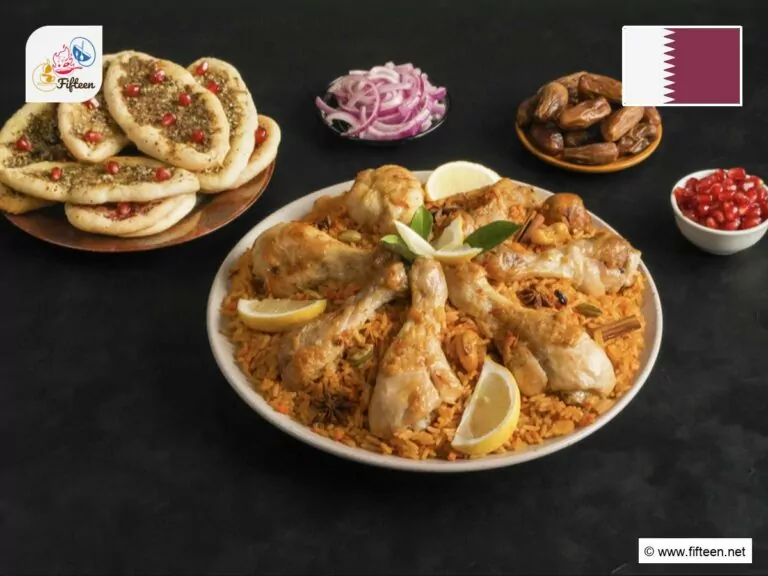
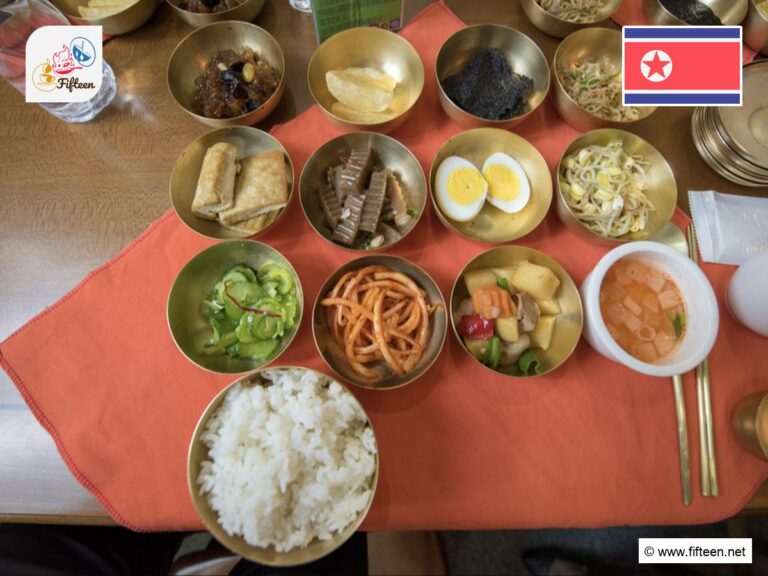
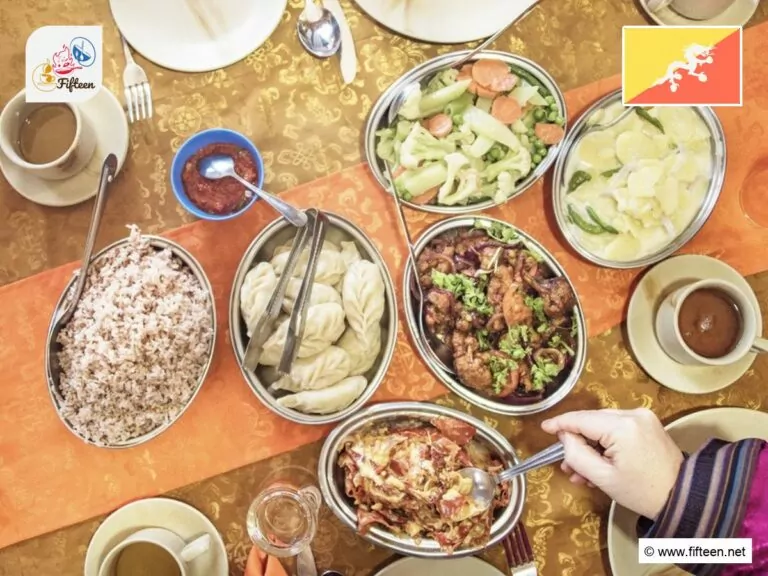
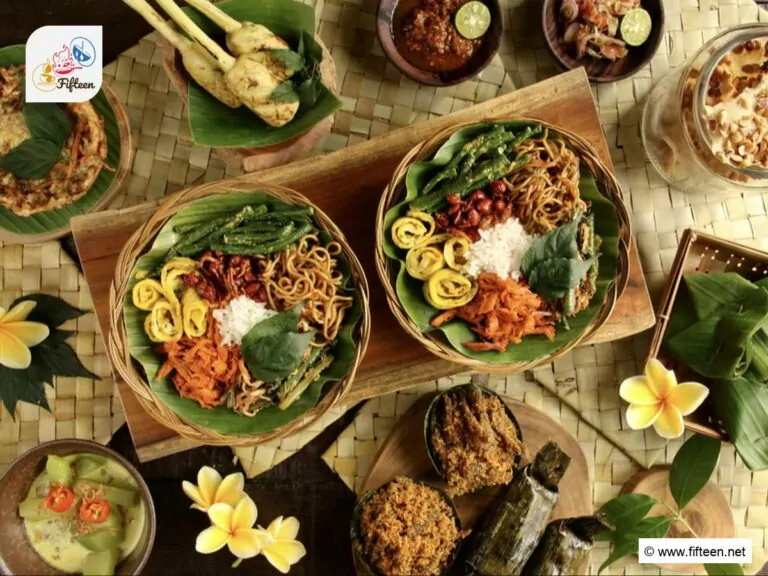
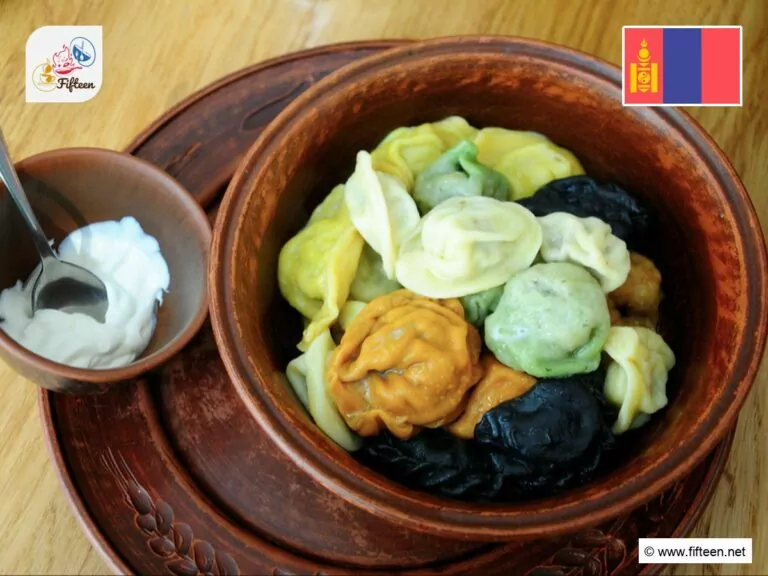
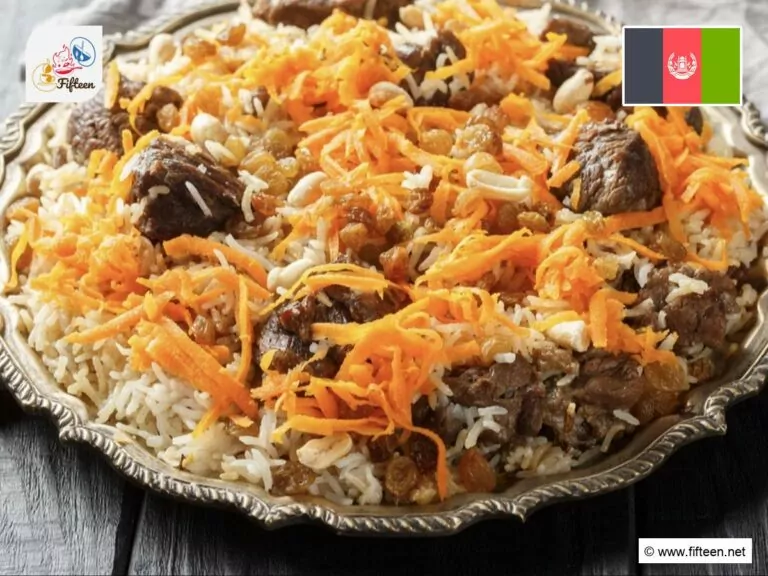
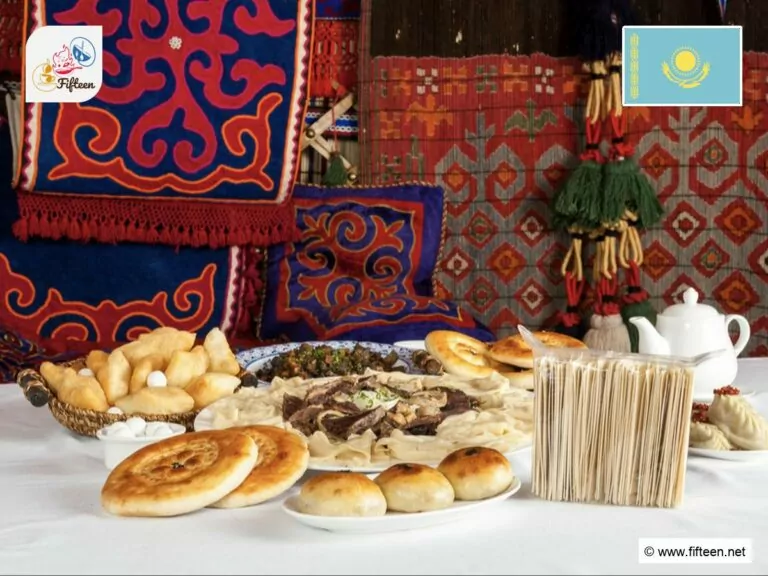
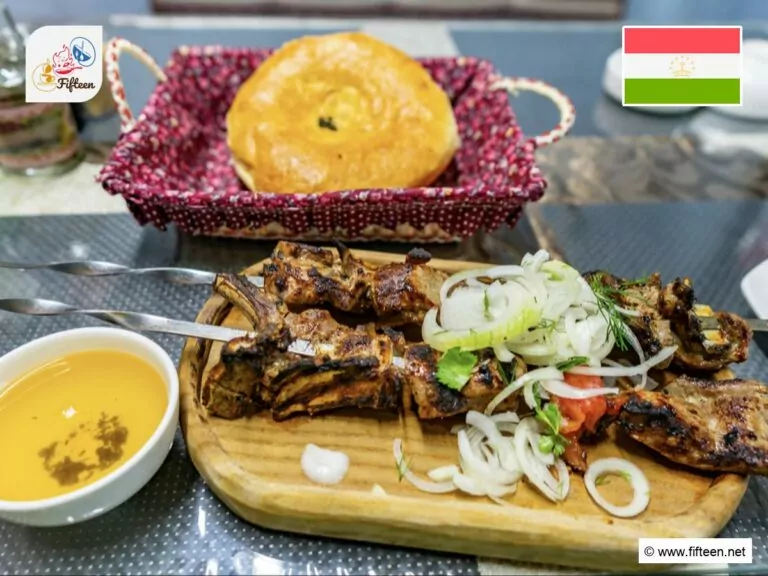
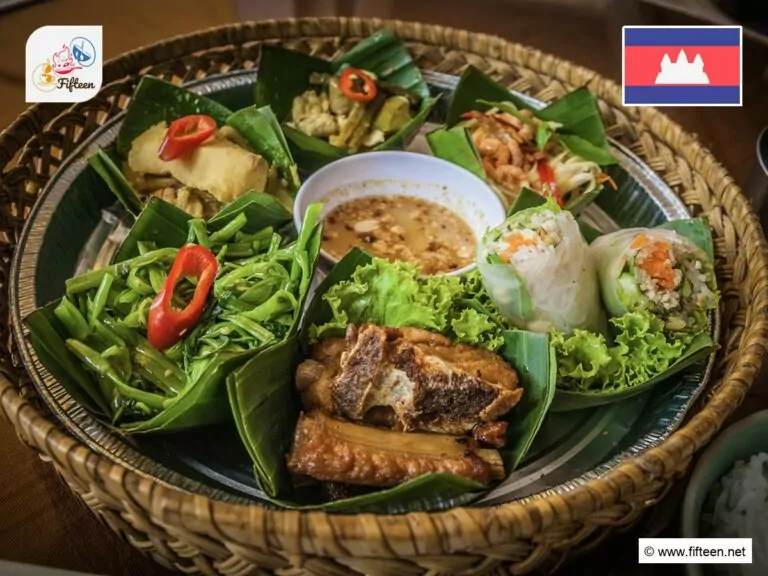
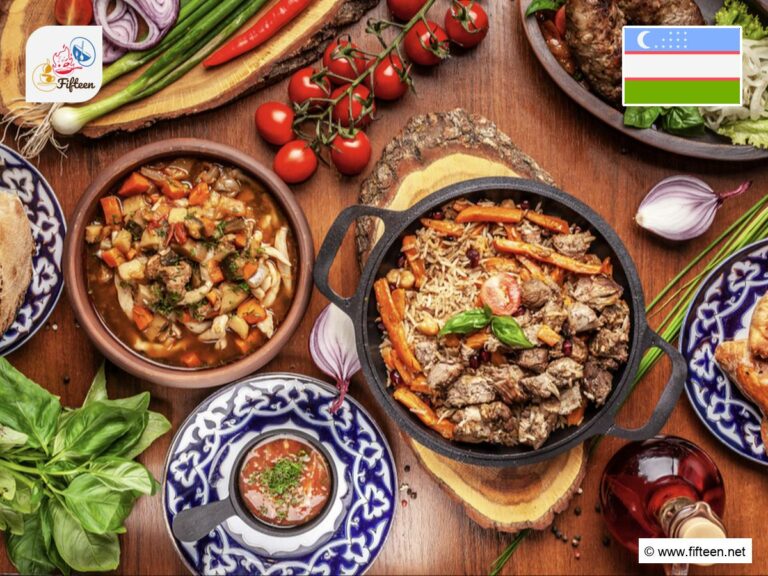
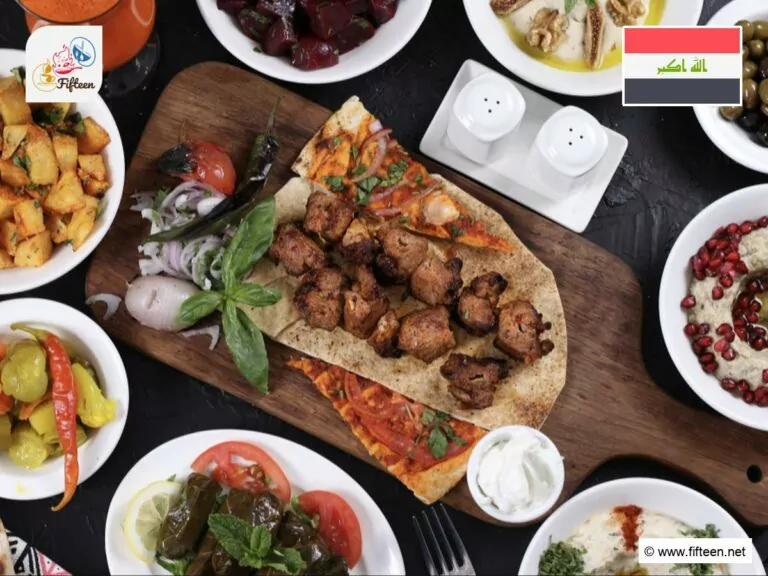
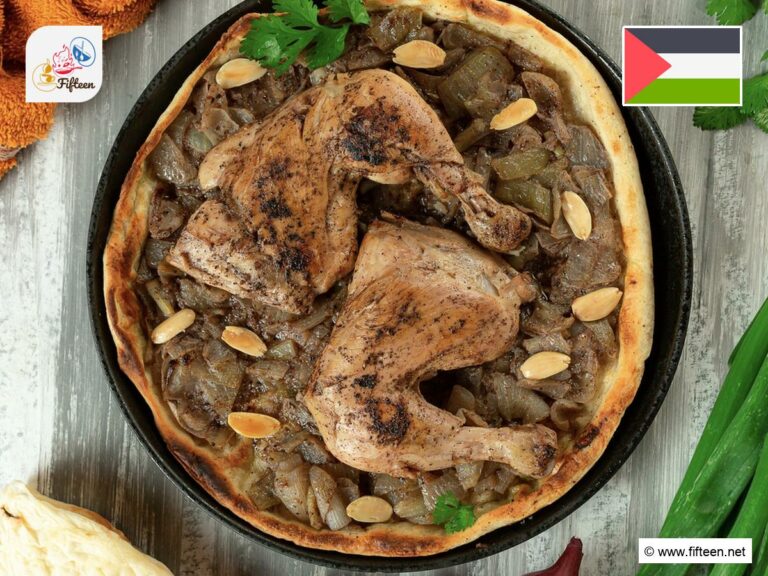
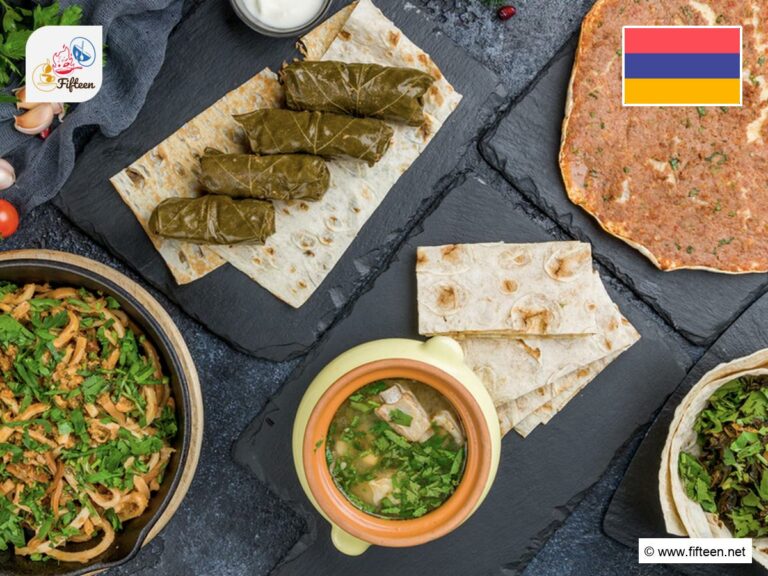
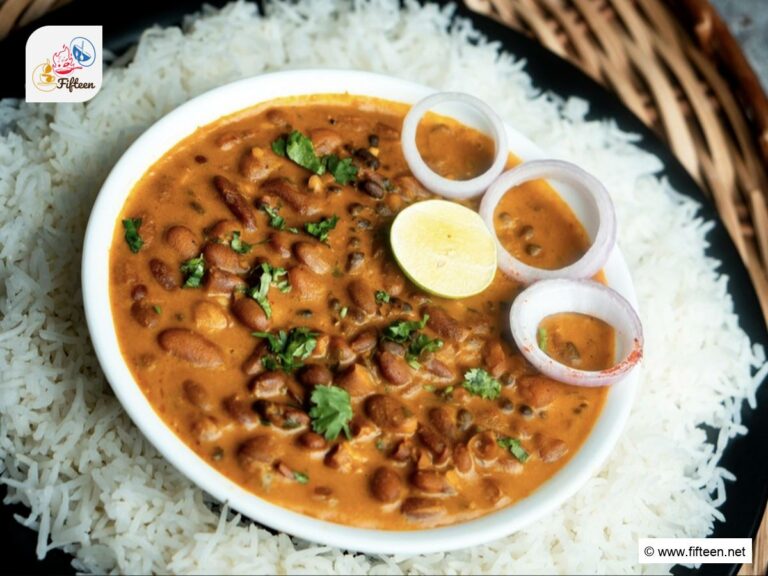
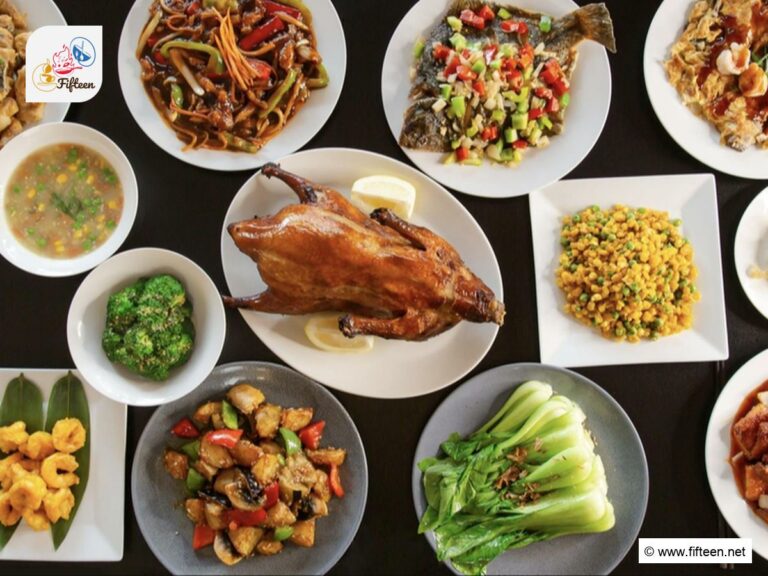
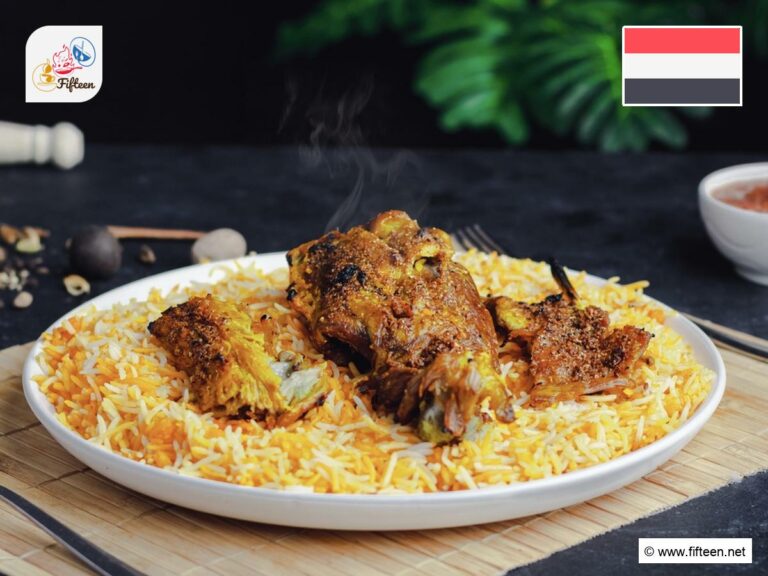
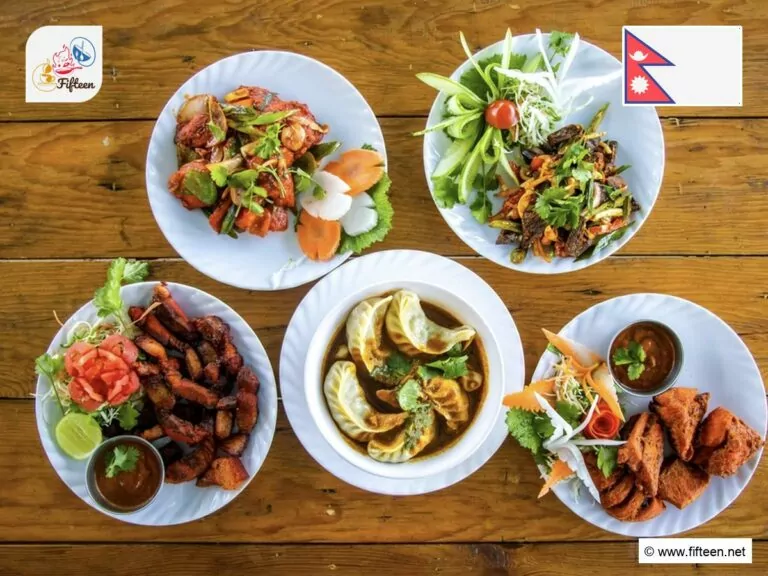
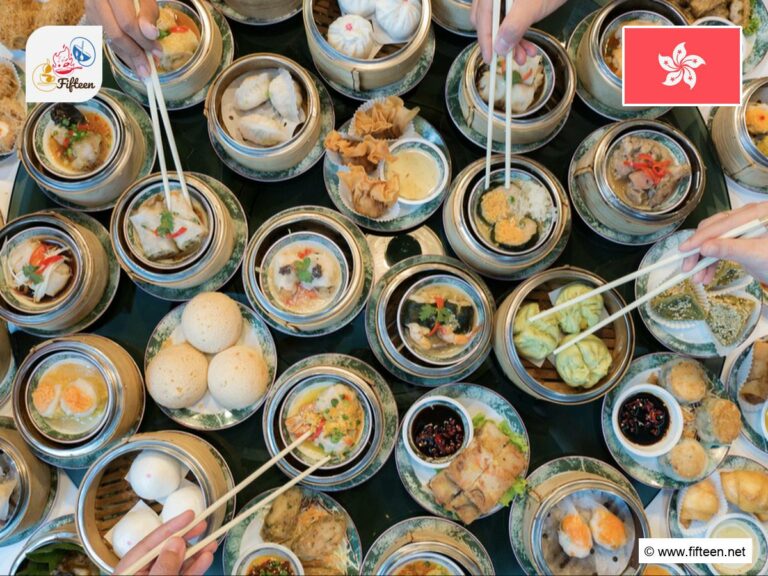
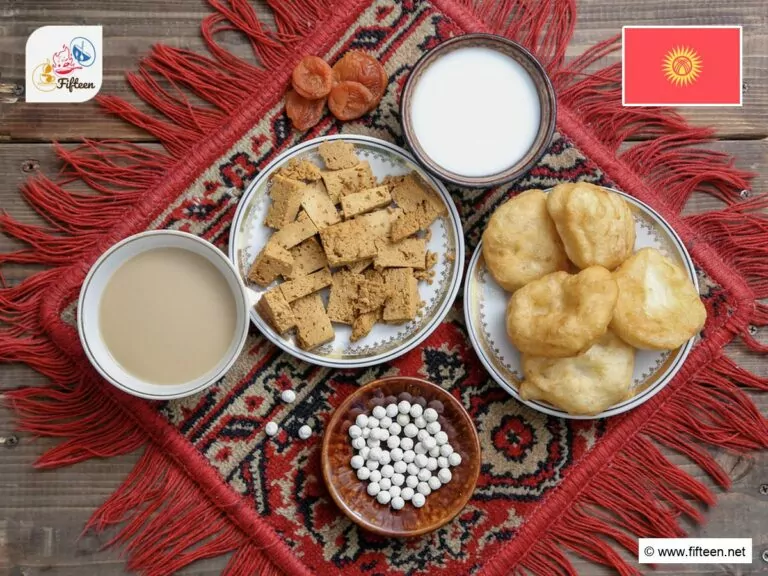
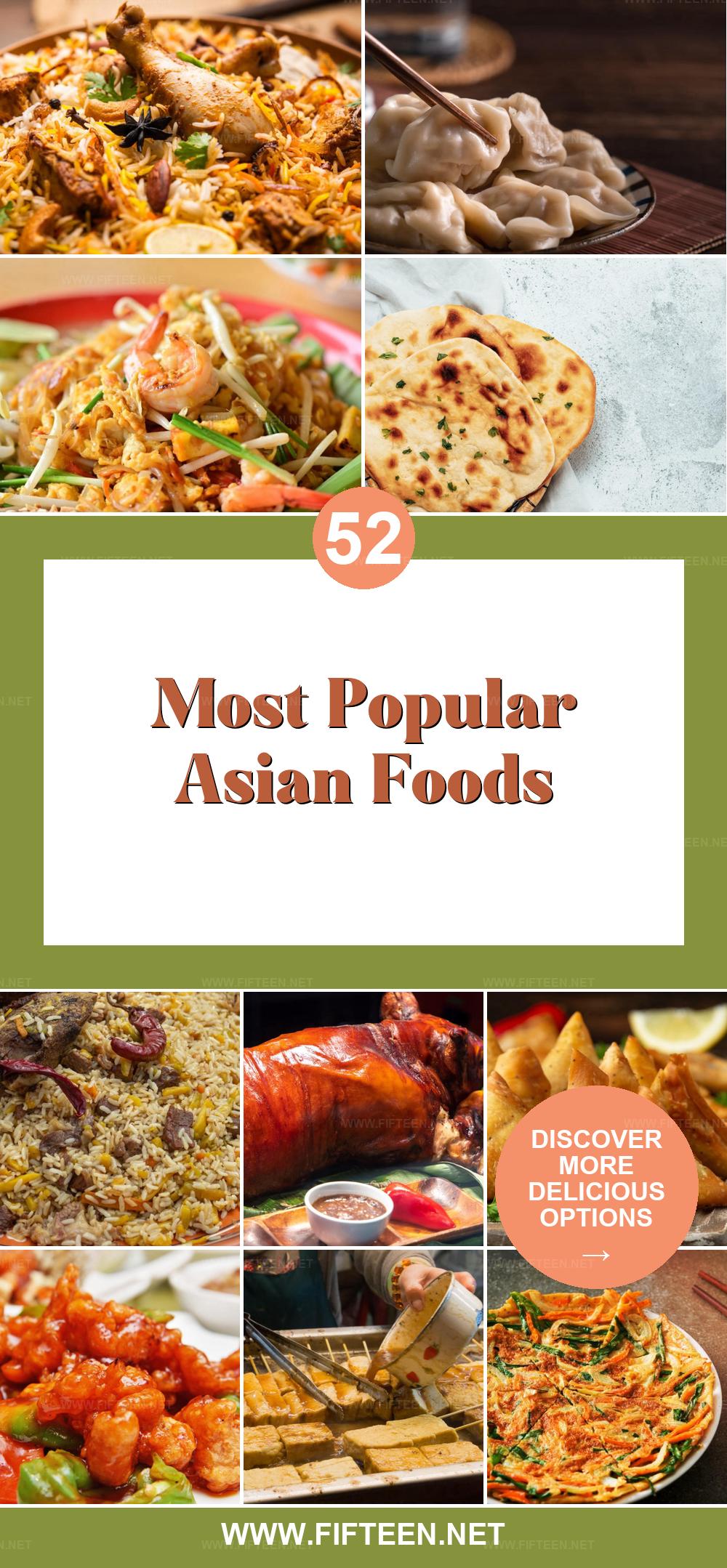
Jamie Scott
Editor in Chief, Senior Content Writer
Expertise
Home Cooking, Meal Planning, Recipe Development, Baking and Pastry, Food Editor, Cooking-video Maker, Western Food Evaluation Expert
Education
Le Cordon Bleu College of Culinary Arts
Local Community College, New York, NY
Jamie Scott is a skilled culinary expert and content creator specializing in Western cuisine. With over 15 years in the culinary field and formal training from Le Cordon Bleu, Paris, Jamie deeply understands how to blend nutrition with delicious flavors. His passion for cooking matches his commitment to making healthy eating accessible and enjoyable.
On Fifteen.net, Jamie brings a fresh perspective to classic dishes and beverages, offering readers insightful recipes, cooking tips, and a fresh view on meal planning that emphasizes taste, health, and simplicity.